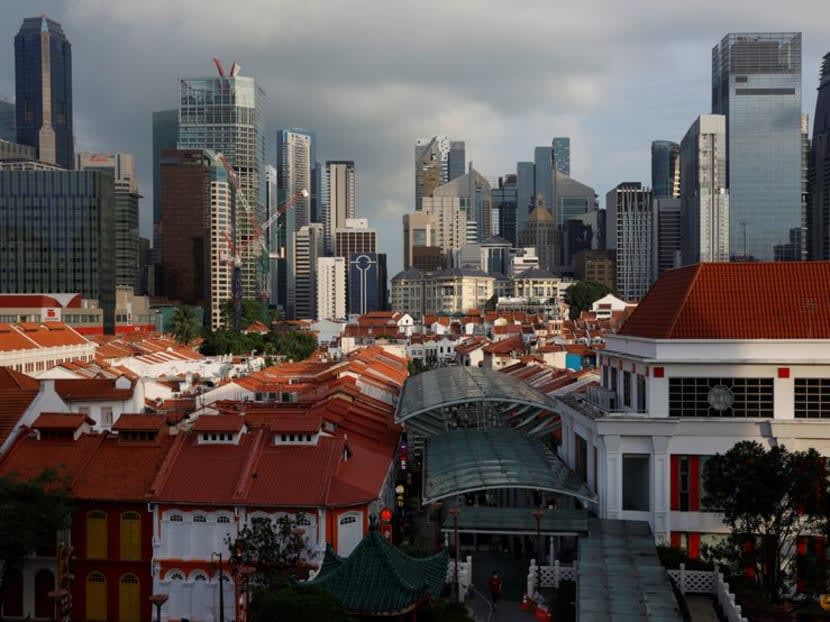Ex-GIC chief economist gets second Pofma order in about a month over comments on Govt’s fiscal surpluses
SINGAPORE — The Government on Friday (Nov 18) used its anti-fake news law against former GIC chief economist Yeoh Lam Keong for a second time in about one month, this time over “false and misleading” statements he made about the Government’s budget surpluses.

- On Nov 7, Mr Yeoh Lam Keong said on Facebook that Singapore has a S$30 billion structural fiscal surplus and argued that the GST hike was inappropriate
- The Ministry of Finance said this was untrue and that the Government recorded an average fiscal balance of S$2.2 billion per year
- This was the second Pofma action taken against Mr Yeoh after he was issued correction directions last month over statements he made about public housing costs
SINGAPORE — The Government on Friday (Nov 18) used its anti-fake news law against former GIC chief economist Yeoh Lam Keong for a second time in about one month, this time over a “false and misleading” statement he made about the Government’s budget surpluses.
On Nov 7, Mr Yeoh shared a news report about Workers’ Party Member of Parliament (MP) Jamus Lim’s parliamentary speech calling for the Goods and Services Tax (GST) increase to be postponed.
Saying that the MP raised “excellent points”, Mr Yeoh said that raising the GST at this time of high inflation could potentially be the “most inappropriate and inopportune moment”.
“And, of course, it seems completely unnecessary at the moment as we have a $30 billion structural fiscal surplus that we have not even begun to publicly delineate clear spending big plans for,” he wrote in his post.
He then published another post a few minutes later with the same text but without the link to the news report attached.
Refuting his claim, the Ministry of Finance (MOF) said that the S$30 billion figure cited by Mr Yeoh was untrue.
Over the last two decades, excluding the 2020 financial year which had a significant fiscal deficit due to Covid-19 spending, the Government recorded on average a fiscal balance of S$2.2 billion per year, it said in a statement.
“It is therefore untrue that the Government has a ‘S$30 billion structural fiscal surplus’ that is available for spending yearly,” MOF said.
It added that the Constitution clearly defines fiscal rules for the Government and any spending beyond these rules means using more of past reserves.
“Furthermore, the Government is not in a position to freely or unilaterally decide to spend any part of the past reserves. Any drawing of the past reserves is subject to the President’s concurrence.”
Deputy Prime Minister Lawrence Wong, who is also Finance Minister, has instructed the Protection from Online Falsehoods and Manipulation Act (Pofma) office to issue correction directions in relation to Mr Yeoh’s two posts on Nov 7.
Alternative news site The Independent Singapore, which reproduced Mr Yeoh’s comment in articles on Nov 9 and 12, will also be issued with correction directions.
Both parties will be required to insert a notice against their original posts or articles, with a link to the Government’s clarification.
This was the second Pofma action taken against Mr Yeoh after National Development Minister Desmond Lee on Oct 14 called for correction directions to be issued against “false and misleading” statements Mr Yeoh made in an argument on Facebook about how the “true cost price” of a public housing flat should be calculated.
The Independent Singapore had also received Pofma directions previously, including for a false claim that Law and Home Affairs Minister K Shanmugam may be stepping down from his ministerial positions and an article alleging that a single mother was evicted from her government-built rental flat.
‘ADDITIONAL CLARIFICATIONS’
In Mr Yeoh’s latest posts, he had also said: “Our reserves are growing very strongly at the rate of $50-$100 billion a year for the next five to 10 years because of our structural balance of payments surpluses and are thus likely to yield much higher NIRC (Net Investment Returns Contribution) revenues over the medium to longer term when such spending is most needed.
“There’s a fair chance that we might not need the GST increase at all!”
While no Pofma directive was taken against this statement, the Government’s Factually website posted "additional clarifications" over these “misleading” statements.
Singapore’s reserves, as defined in the Constitution, are the net assets of the Government and other entities specified in the fifth schedule, such as the Monetary Authority of Singapore (MAS), the website said.
These assets also include the official foreign reserves (OFR) held by MAS.
While balance of payments surpluses correspond to an increase in OFR assets, this increase in OFR assets does not result in an equivalent increase in the reserves, the website said.
“This is because the increase in OFR assets may be matched by increases in MAS’ liabilities. For instance, when MAS purchases foreign assets whilst implementing monetary policy, the increase in OFR is accompanied by an increase in MAS’ liabilities, such as MAS Bills.”
It added that it is speculative to suggest that the MAS’ OFR will continue to grow at the same rate as historical balance of payment trends.
This is because the MAS’ steady accumulation of OFR in recent years had taken place during a period of unprecedented monetary easing globally, but the situation is now changing with central banks around the world aggressively tightening monetary supply, it said.
“(Mr) Yeoh thinks that strong ‘reserves’ growth and ‘higher NIRC revenues’ will give us a ‘fair chance’ of addressing our spending needs. But this is misguided,” the website said.
“The returns from the investment of our reserves are more likely to slow over time, given the structural challenges in the world, including rising geopolitical tensions, climate change, and ageing populations.”
In the past five years, the NIRC provided an average annual revenue stream of about 3.5 per cent of Singapore’s gross domestic product (GDP), the website said, noting that MOF has already explained that it expects the NIRC to keep pace broadly with economic growth over the medium to longer term.
“That means that as government spending continues to increase as a share of GDP, we will need to rely on other revenue sources to close the funding gap.”








